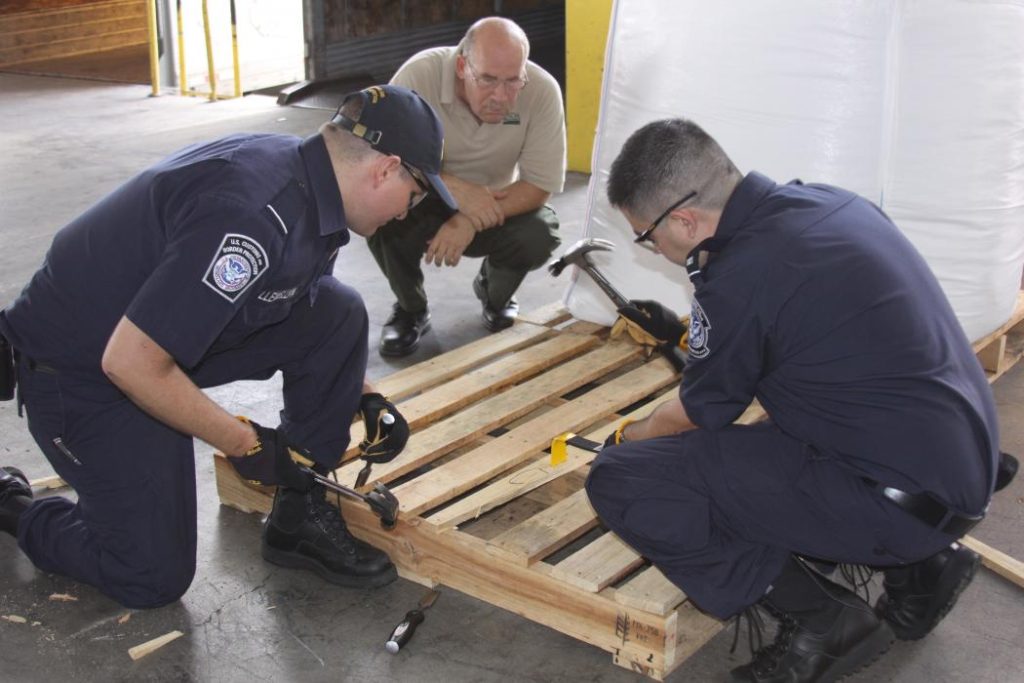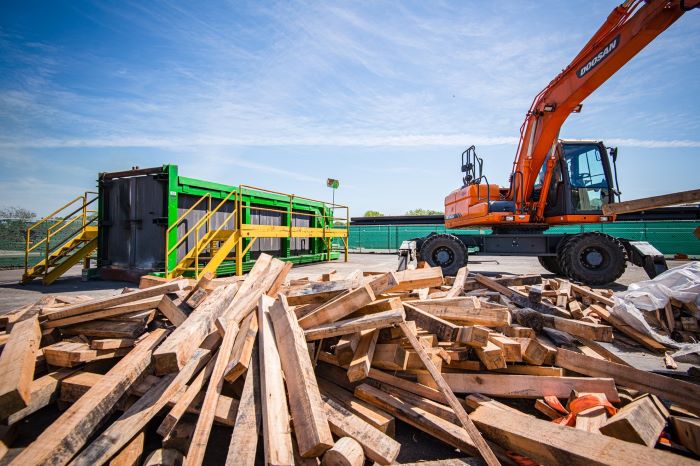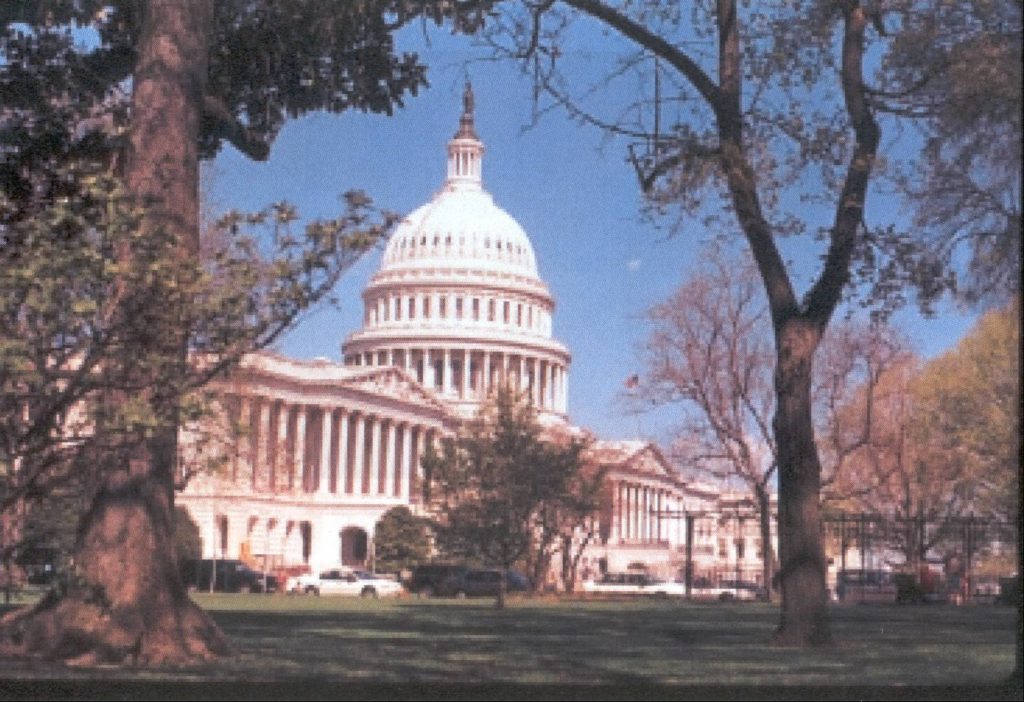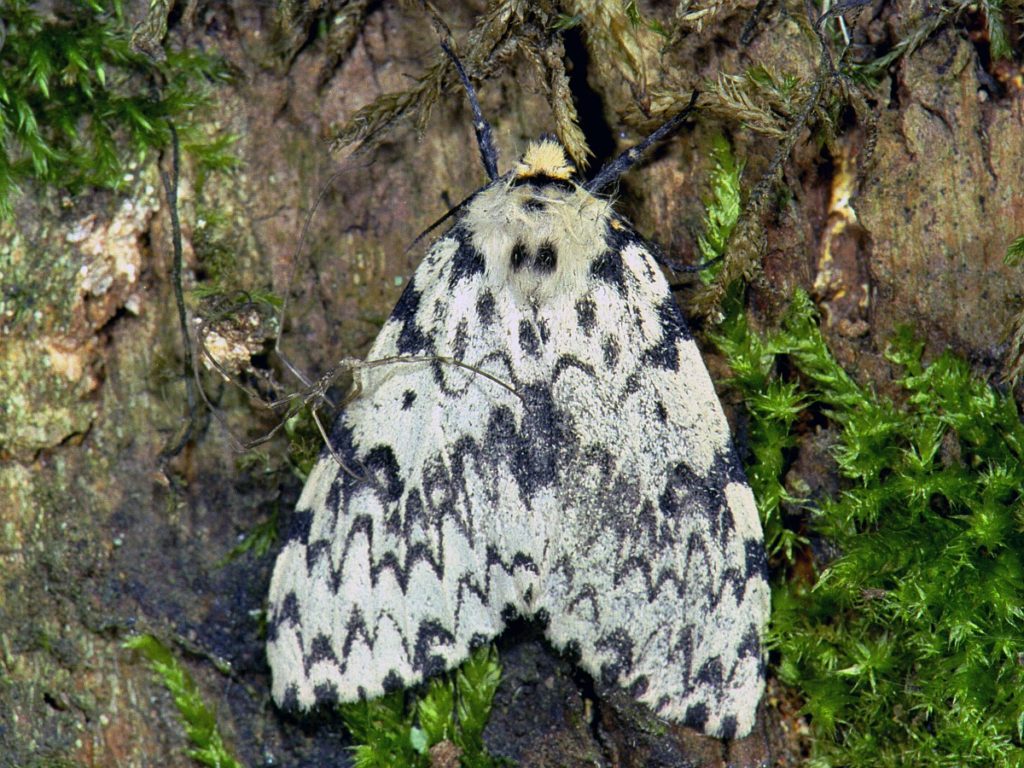Volumes of imports continue to rise and enter the U.S. at a wider range of ports. Also, imports continue to arrive with insects in their wood packaging. The international policy intended to fix this problem is not working. It is vital to resolve this issue.

Insects in Wood Packaging
Over the ten-month period October 2020 through June 2021, Customs and Border Protection (CBP) interceptions were typical, according to Kevin Harriger, of the Department of Homeland Security, CBP. In a good sign, the number of infested shipments is 4.5% lower than the same period of the previous year. CBP inspectors found 1,563 shipments with non-compliant wood packaging. Three quarters, or1,148 shipments, lacked the required ISPM#15 stamp. A pest was found in 415 shipments (26%). Nearly three-quarters of the shipments (72% or 1,119 shipments) were carrying miscellaneous cargo. The leading pest family was Cerambycids. There were fewer Buprestids than in previous years, but more Siricids. (Reference at the end of the blog.)
Government View vs. Industry View
CBP assessed liquidated damages (a penalty related to the value of the cargo associated with the wood packaging; legal process explained here) on 654 cases (42% of the violations). These penalties totaled about $541,000 (Harriger). In response to industry objections, Harriger suggests that importers “know before you go” and work with the National Plant Protection Organization (NPPO; phytosanitary agency) of exporting countries so as to avoid interception-related delays.
At a separate webinar sponsored by IHS Markit (Journal of Commerce), an APHIS representative (Tyrone Jones, Trade Director-Forestry Products) said that in his view, ISPM#15 is working because less than 1% of wood packaging was non-compliant. Jones conceded that given the huge quantities of wood packaging in use, even a small infestation rate can result in a non-trivial amount of non-compliant wood. Jones also noted that APHIS has co-hosted workshops with Asian and Central/South American phytosanitary officials to improve their implementation of ISPM#15. The official process calls for the U.S. National Plant Protection Organization (NPPO; APHIS) to inform the foreign NPPO of problems and ask that agency to investigate and bring about a solution. Jones said the U.S. has received feedback from the exporting countries. In one case – apparently in China – APHIS got more directly involved –although how it did so is unclear. You may listen to the webinar by going here. Listening is without cost, but you must register at the site.

However, as the previous guest blog by Gary Lovett and Diana Davila makes clear, importers are frustrated. They insist that even when they exercise great care in obtaining dunnage, the system is not working. I have blogged previously about the need for government to help importers obtain information that would facilitate compliance (go to “wood packaging” category on this blog site). Jones said APHIS could not provide lists of dunnage suppliers with records of non-compliance.
America needs to ensure that pests are not introduced while trade continues. Furthermore, it is a matter of fairness. U.S. importers are trying but are stymied by the process. For these reasons, the Center for Invasive Species Prevention applauds the initiative of Houston importers to engage players in the supply chain in new approaches. We wish them success!
Issue is International
Concern about the impact of these pest detections – and resulting disruption of cargo shipments – is international. According to an article in the Maritime Executive, five international freight transport organizations under auspices of the World Shipping Counsel in the Cargo Integrity Group are pushing the International Plant Protection Convention (IPPC) to work with them to focus mandatory measures on known high-risk areas and cargoes.
Import Volumes Rising
Meanwhile, volumes of imports continue to rise substantially to meet booming consumer demand – with concomitant risk. Also, imports enter at a wider range of ports. The following data refer to containerized cargo, which is associated with crates and pallets. While the form of wood packaging differs from the dunnage used for the break-bulk cargo which has been the problem in Houston, the issues are the same.
The Southern California port complex (Los Angeles/Long Beach) expects a 10% growth in container volumes this year – to more than 19 million TEU [a standardized measurement equivalent to a 20-foot long container] (Angell 5 August 2021). A few weeks later, this figure was raised to 20 million TEU (Mongelluzo, September 3, 2021). The Seattle-Takoma port complex has received 12.9% more containers from Asia this year than during the same period in 2019. Oakland has received 17.8% more (Mongelluzo August 24, 2021).
In the East, the port of Savannah moved 5.3 million TEU in the fiscal year ended June 30, an 18% increase over the same period in 2018–19 (before the COVID-19 pandemic upset import volumes). In expectation of further growth in volume, the Port of Savannah is creating additional container storage capacity; it aims to reach 7.5 million TEU by mid-2023 (Ashe 26 July 2021). The Port Authority of Virginia has voted to dredge its main channel which would make the port the deepest on the East Coast (surpassing Charleston) and allow greater access to larger ships coming from Southeast Asia. Virginia’s four container terminals currently handle 4.8 million TEU, collectively. We – federal taxpayers – are paying for these port expansions and associated risks of introduction of wood-boring pests, Asian tussock moths, and aquatic invaders.

Congress Paying to Expand Ports
The bipartisan infrastructure bill now pending in Congress contains $11.8 billion in new federal funding over the next five years to expand and improve ports and inland waterways (Szakonyi August 3, 2021). For example, funding for a portion of the dredging planned by the Port Authority of Virginia is included in this bill.
If adopted, the bill [§40804(b)(6)] also would provide $200 million for invasive species detection, prevention, and eradication, including conducting research and providing resources to facilitate detection of invasive species at points of entry. The funding is divided equally between the departments of Interior and Agriculture. Agencies will need these funds to address the plant pests (to say nothing of aquatic invaders) that arrive at these expanded ports!

Asian Gypsy Tussock Moths – Improved Detection Rates Result from Better Targetting
Another threat to America’s forests is the arrival of tussock moths from Asia. Kevin Harriger told the National Plant Board that CBP has improved its targetting of ships coming from Asia, based on flight dates, proximity of specific loading docks to forested areas, and other factors. Since 2018, CBP has detected moth egg masses on 177 ships. This equals an approach rate of 12.5% – much higher than the historical moth approach rate of 1%. Ships detected to be transporting moths must leave U.S. or Canadian waters and be cleaned. CBP is now searching vessels more intensely during re-inspection– and finding additional egg masses that had been missed. Thanks to the better targetting data, APHIS, CBP and state officials are aware of the approach of suspect vessels before they arrive.
SOURCES
Angell, M. Port of Virginia to proceed with second dredging project. July 27, 2021. https://www.joc.com/port-news/us-ports/port-virginia/port-virginia-proceed-second-dredging-project_20210727.html?utm_source=Eloqua&utm_medium=email&utm_campaign=CL_JOC%20Daily%207%2F28%2F21%20_PC00000_e-production_E-107609_TF_0728_0617
Angell, M. Long Beach will need 24-hour shifts for future cargo flow: Cordero. August 5, 2021 https://www.joc.com/port-news/us-ports/port-long-beach/long-beach-will-need-24-hour-shifts-future-cargo-flow-cordero_20210805.html?utm_campaign=CL_JOC%20Port%208%2F11%2F21%20_PC00000_e-production_E-108850_TF_0811_0900&utm_medium=email&utm_source=Eloqua
Ashe, A. Savannah aims to restore fluidity amid record cargoes. July 26, 2021. https://www.joc.com/port-news/us-ports/georgia-ports-authority/savannah-aims-restore-fluidity-amid-record-cargoes_20210726.html?utm_campaign=CL_JOC%20Port%207%2F28%2F21%20%20_PC00000_e-production_E-107524_TF_0728_0900&utm_medium=email&utm_source=Eloqua
Harriger, K. DHS CBP. Presentation at annual meeting of the National Plant Board, 26 July, 2021. https://www.youtube.com/watch?v=btb6FwQkeeo&list=PLeT07astA4fs0OOHQDWHJw2thXQX-4UBb
Haack, R.A., Britton, K.O., Brockerhoff, E.G., Cavey, J.F., Garrett, L.J., et al. 2014. Effectiveness of the International Phytosanitary Standard ISPM No. 15 on Reducing Wood Borer Infestation Rates in Wood Packaging Material Entering the United States. PLoS ONE 9(5): e96611. doi:10.1371/journal.pone.0096611
Jones, J.T, USDA APHIS during JOC webinar, 19 August, 2021
Mongelluzzo, B. Carriers returning to Oakland, Seattle-Tacoma as LA-LB congestion mounts. 24 August, 2021. https://www.joc.com/port-news/us-ports/carriers-returning-oakland-seattle-tacoma-la-lb-congestion-mounts_20210824.html?utm_source=Eloqua&utm_medium=email&utm_campaign=CL_JOC%20Daily%208/25/21_PC00000_e-production_E-110369_KB_0825_0617
Mongelluzzo, B. September 3, 2021. LA-LB preparing for record 20 million TEU this year. https://www.joc.com/port-news/us-ports/la-lb-preparing-record-20-million-teu-year_20210903.html?utm_source=Eloqua&utm_medium=email&utm_campaign=CL_JOC%20Daily%209%2F7%2F21%20_PC00000_e-production_E-111179_TF_0907_0617
Szakonyi, M. August 3, 2021. JOC. Advancing infrastructure bill promises US port funding splurge. https://www.joc.com/port-news/advancing-infrastructure-bill-promises-us-port-funding-splurge_20210803.html?utm_campaign=CL_JOC%20Port%208%2F4%2F21_PC00000_e-production_E-108286_TF_0804_1045&utm_medium=email&utm_source=Eloqua
Posted by Faith Campbell
We welcome comments that supplement or correct factual information, suggest new approaches, or promote thoughtful consideration. We post comments that disagree with us — but not those we judge to be not civil or inflammatory.
For a detailed discussion of the policies and practices that have allowed these pests to enter and spread – and that do not promote effective restoration strategies – review the Fading Forests report at http://treeimprovement.utk.edu/FadingForests.htm